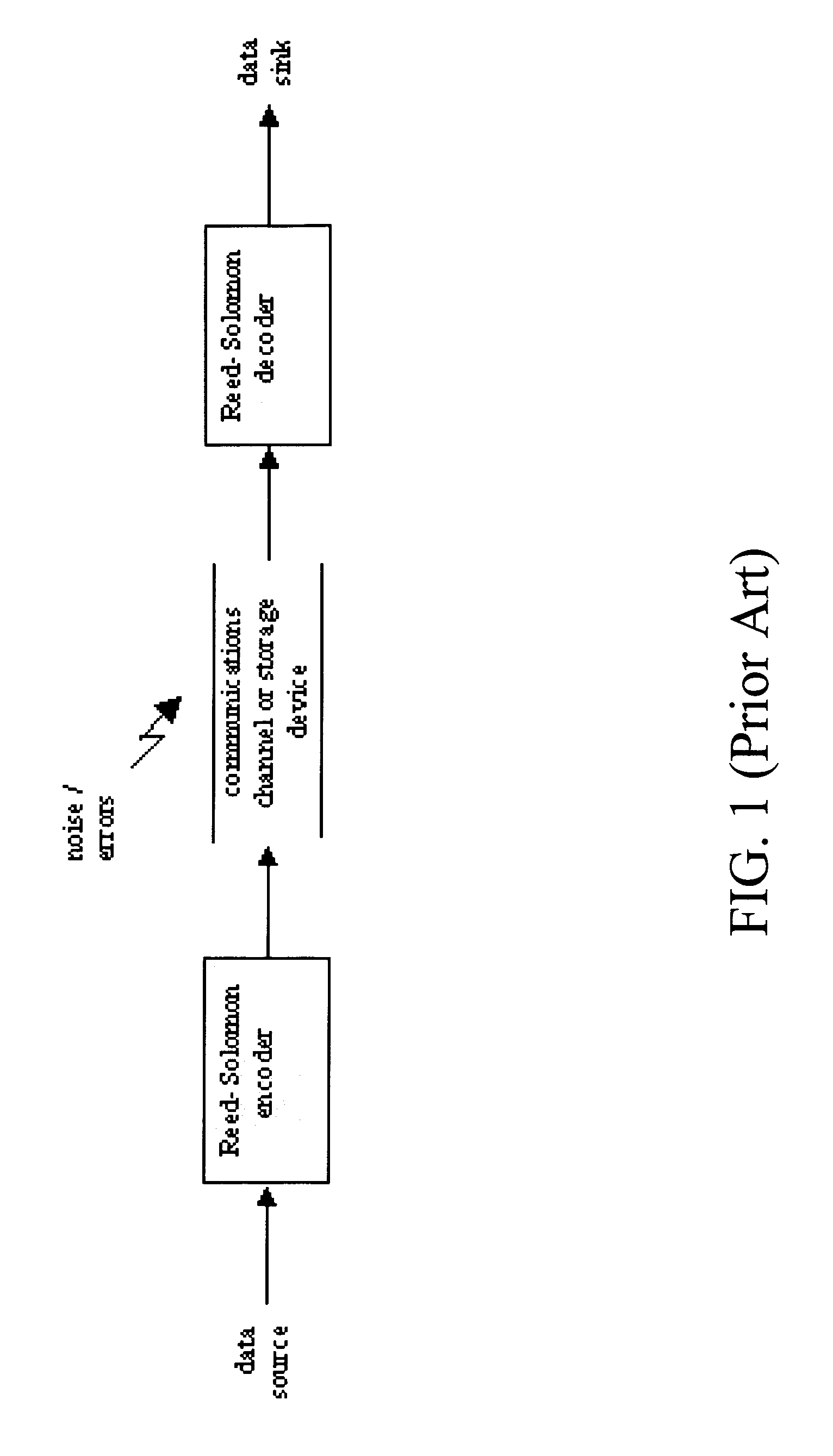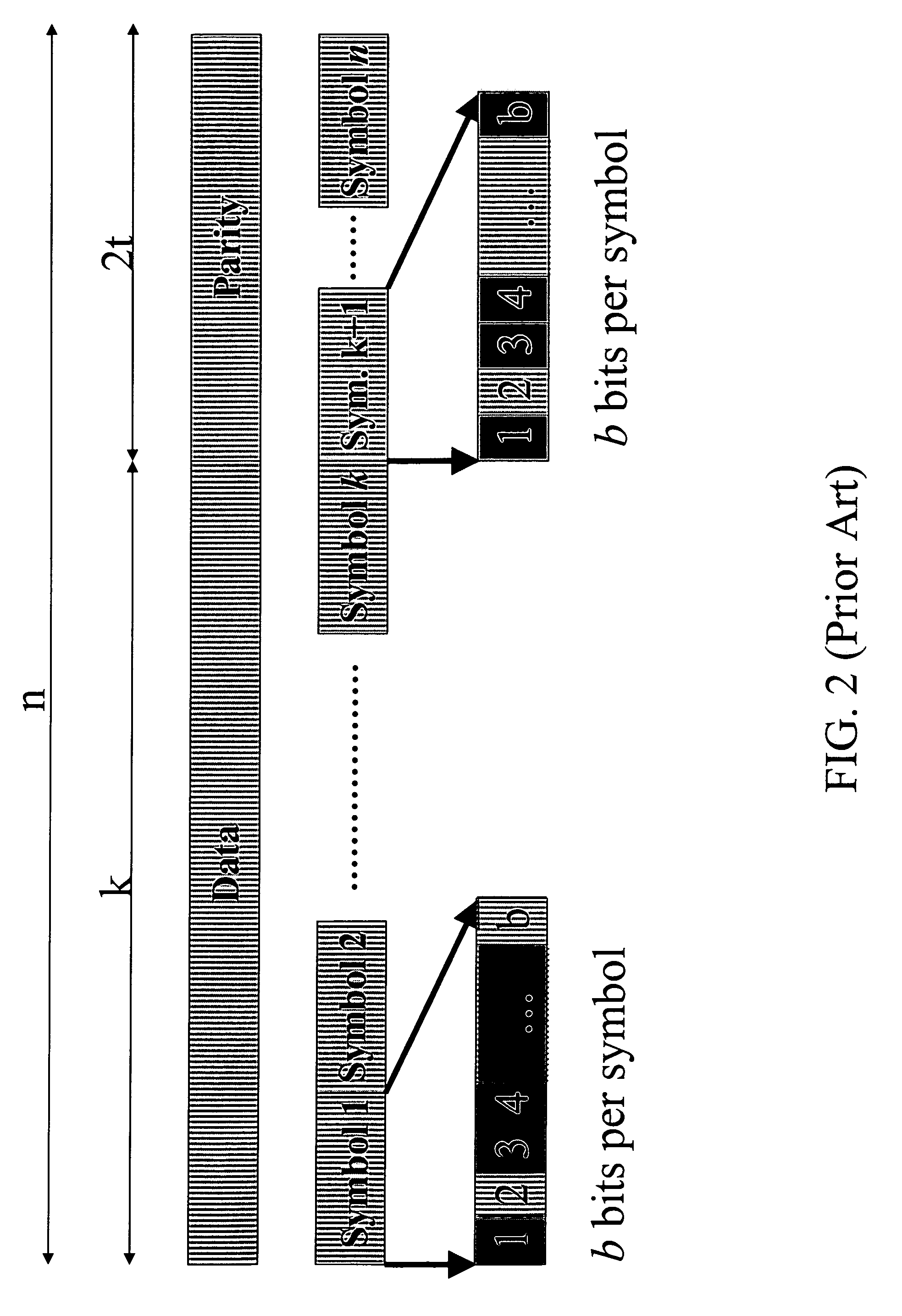Even-load software reed-solomon decoder
a software and decoder technology, applied in the field of software implementation of reed-solomon (rs) codes, can solve problems such as data errors, difficult design of rs codes, and often needed error-corrective coding
- Summary
- Abstract
- Description
- Claims
- Application Information
AI Technical Summary
Benefits of technology
Problems solved by technology
Method used
Image
Examples
Embodiment Construction
[0056] Referring to FIG. 6, there are two categories of RS decoding algorithms upon which most of the previous works on hard-decision RS decoders are centered: syndrome-based decoding and remainder-based decoding. The embodiments of this invention are discussed for syndrome-based decoding, although the inventive concepts can be used with remainder-based decoding.
[0057] The decoding process of a syndrome-based decoder can be divided into four steps as follows: [0058] 1. Calculate the syndrome 12; [0059] 2. Calculate the coefficients of the error locator polynomial 13; [0060] 3. Search the roots of the error locator polynomial 14; [0061] 4. Evaluate the magnitude of the errors in the received code word 15, and then correct the errors 6. This step may be performed as one step or as two separate steps.
[0062] The syndrome calculation 12 is essentially a frequency-domain analysis of the received code word through a Galois Field Fourier transform. A non-corrupted received code word shoul...
PUM
 Login to View More
Login to View More Abstract
Description
Claims
Application Information
 Login to View More
Login to View More - R&D
- Intellectual Property
- Life Sciences
- Materials
- Tech Scout
- Unparalleled Data Quality
- Higher Quality Content
- 60% Fewer Hallucinations
Browse by: Latest US Patents, China's latest patents, Technical Efficacy Thesaurus, Application Domain, Technology Topic, Popular Technical Reports.
© 2025 PatSnap. All rights reserved.Legal|Privacy policy|Modern Slavery Act Transparency Statement|Sitemap|About US| Contact US: help@patsnap.com



